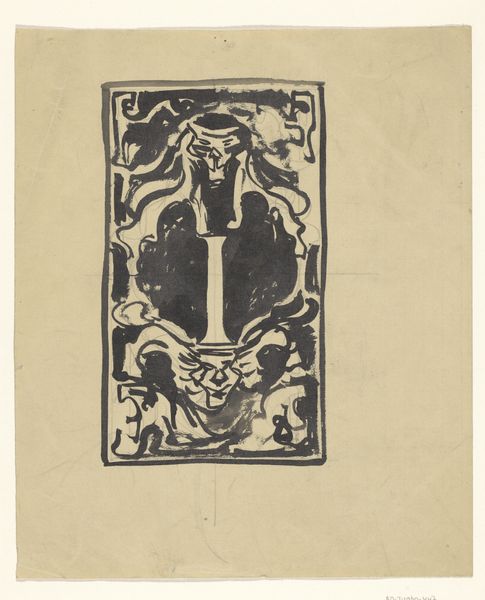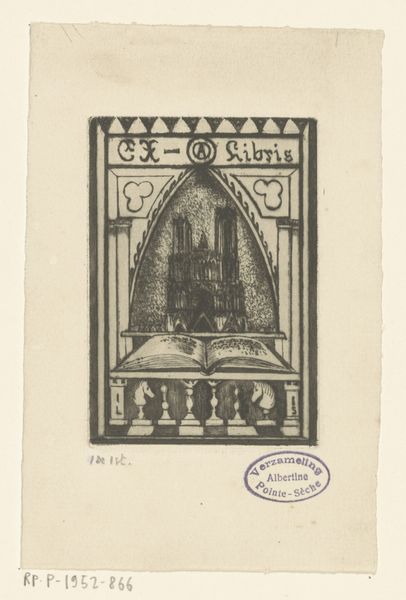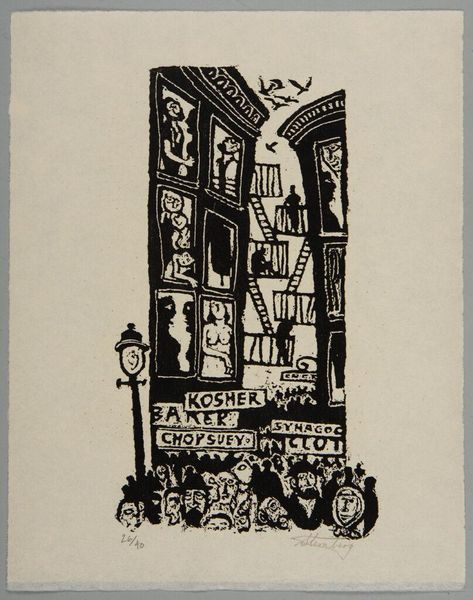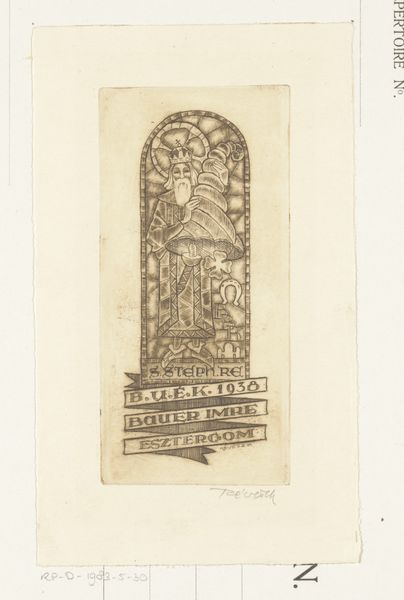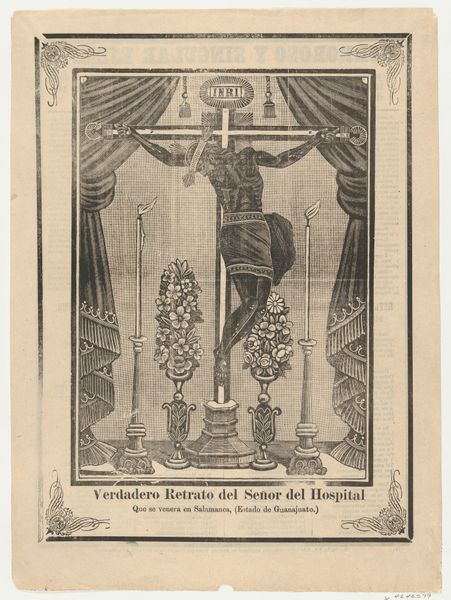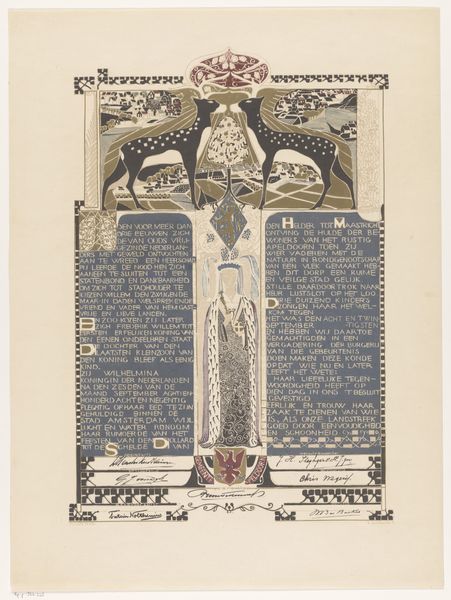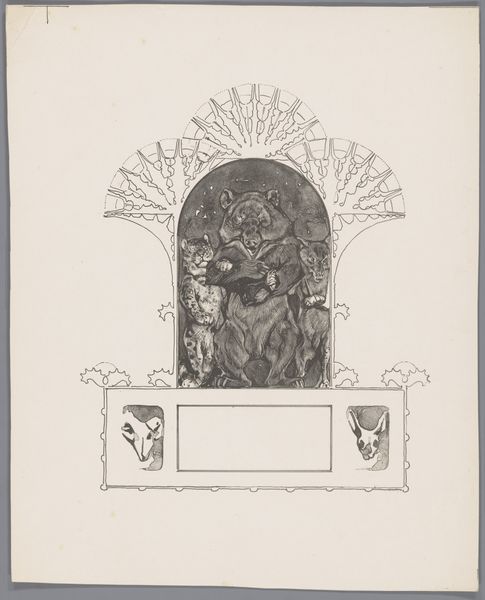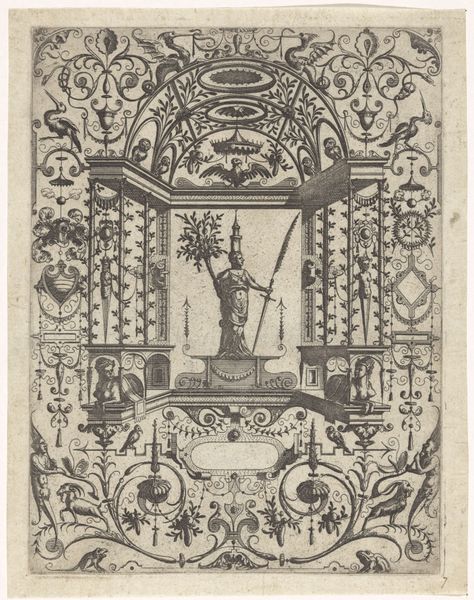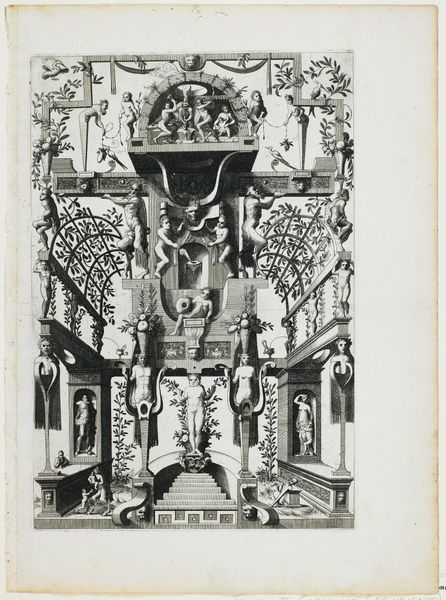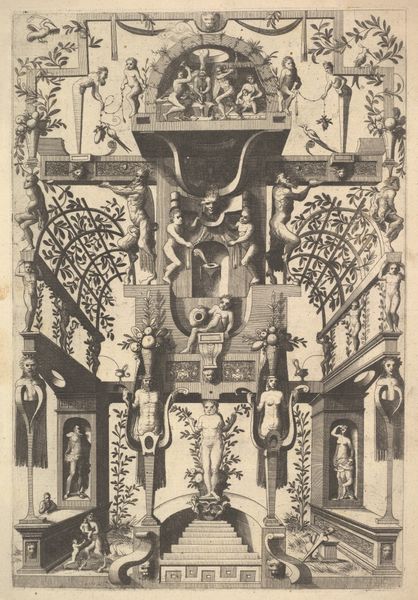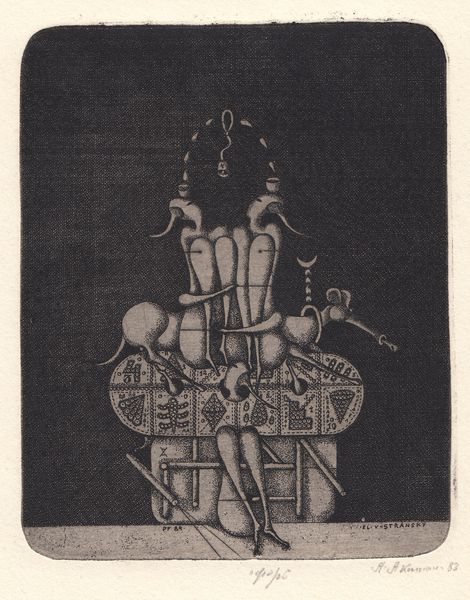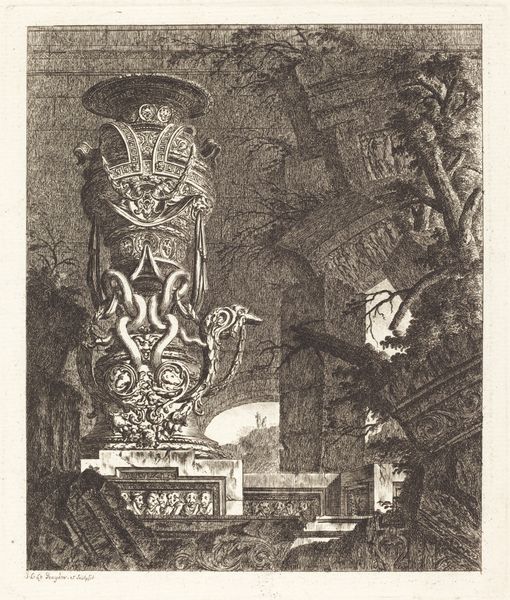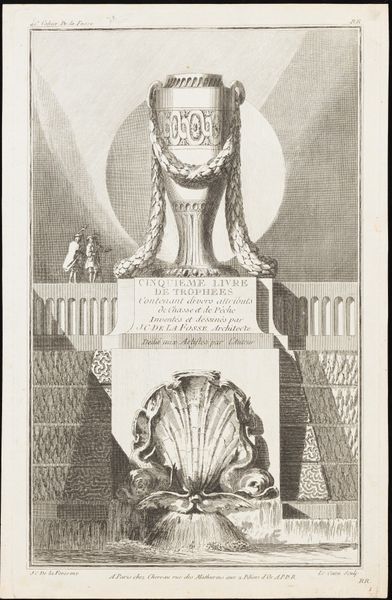
Dimensions: height 172 mm, width 85 mm
Copyright: Rijks Museum: Open Domain
Dezsö Farkas made this bookplate for Cardinal Jusztinián Serédi using a woodcut technique. This process involves carving a design into a block of wood, inking the surface, and then pressing it onto paper to create a print. The stark contrast between black and white is a defining feature of woodcut prints; the artist carefully carves away the areas that will appear white, leaving the raised areas to catch the ink. Look closely, and you can see the artist’s hand in the variations of the carved lines. This isn’t mechanical reproduction, it’s a crafted image. Woodcut has a rich history, particularly in printed books, where it was often used for illustrations. In a society before mass media, these images would have been essential for communicating ideas and information, connecting the craft of the artist to the wider culture of knowledge and belief. Appreciating this print involves acknowledging the labor and skill embedded in the woodcut, and the social role that printed images like this once played.
Comments
No comments
Be the first to comment and join the conversation on the ultimate creative platform.
